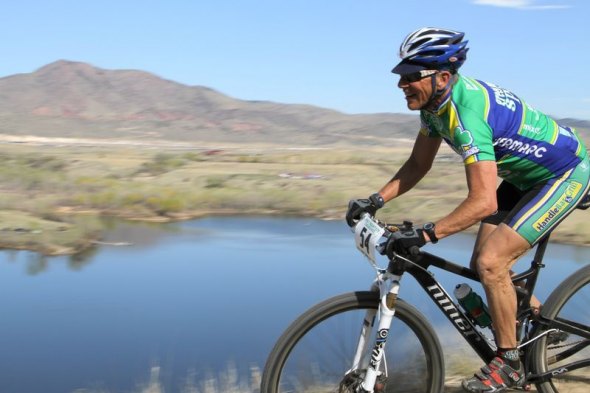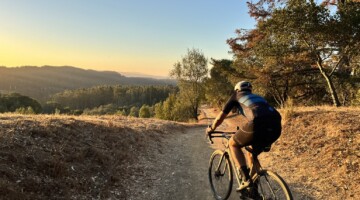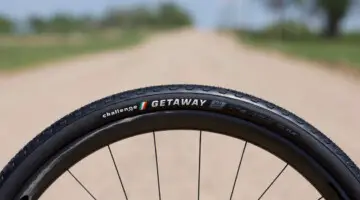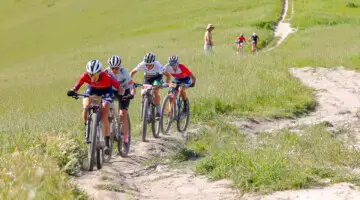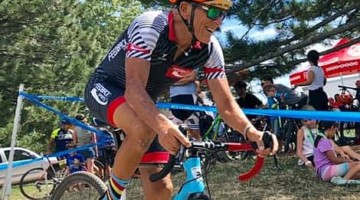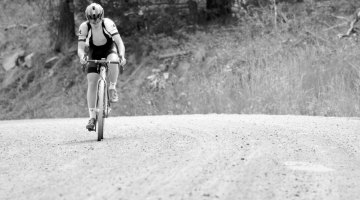After understanding his Lessons Learned from a hit and run accident that prevented Lee Waldman from competing in his year long goal of racing in the Cyclocross National Championships, Waldman ahead to the weekend that he’s been training for. This weekend, he will be taking on the Crusher in the Tushar, a 70 mile course in Utah with over 10,000 feet of climbing. Today, he looks at the steps he’s taken to get to this moment.
by Lee Waldman
The Crusher in the Tushar is Saturday and I’m excited, and anxious, about the possibility of riding in a pack again. I definitely wasn’t ready in May, and still not in June. I’m not sure if that was because I knew that my body wasn’t ready, and as a result my mind was resistant. Possibly, because my mind wasn’t ready, my body responded accordingly. It doesn’t really matter. The doctors were right on when, after my accident, they told me that they wouldn’t support my racing again till late summer at the earliest. Some didn’t even want me to race this season. That obviously didn’t fly. I’m still feeling that nervous anticipation when I think about competing again. The difference is that it’s the kind of nervousness that translates into excitement at the thought of lining up with other riders and pushing the limits. It’s not the type of nervousness that then leads to standing at the starting line feeling like it’s time to puke and realizing that your legs are made of lead. Big difference, yet a positive one.
It seems as if I’m destined in my racing life, to continue learning lessons. A couple of weeks ago I suffered through a functional threshold power test. It only took 20 minutes but it was 20 minutes of pain. I won’t share the results; they aren’t that impressive, believe me. When I finished I still had just enough blood flow to my brain to allow for some critical thinking. I thought about how much the test sucked, how tired I was, what I would eat when I got home, and eventually I realized that the climb was over and I rode one of my favorite flowy descents to the bottom and back home. After riding this particular route at least once a week for the last two decades, I know it well enough that my mind tends to wander. I do my best thinking on the bike and on that particular day the connections between cycling, dancing and life were on my mind.
Technique is critical in cyclocross. I work on it continually. As usual, I was playing with my body position on the bike through the corners. I noticed something interesting! The way I position myself in corners mimics the way that I work my body when I dance! Simply another example of the crossover between such seemingly different disciplines.
One of the elements that makes a dancer look good and perform well, is their ability to isolate and control their body as needed. Latin dancers shift their rib cages to give their dancing that distinctive Latin flair. That simple movement creates balance and grace. Negotiating those turns I began to explore the possible crossovers between dance technique and cornering. After all, if it works on the dance floor maybe, just possibly, it might work on the bike. Turns out that it does! Shifting the rib cage keeps the bike and body in opposition and in balance as you really lean the bike into each turn.
Since we’re talking about metaphors here what I’ve just described is flexibility. In everyday life we need to be flexible enough in our thinking and in the way we respond to changes to be able to keep ourselves in balance. Sometimes that means being ready to shift focus or direction at a moment’s notice. Life isn’t predictable and as my old principal said, “Blessed are the flexible because they never get bent out of shape”.
When we dance, when we ride, core strength is vital. As cyclists and as dancers having a strong core is crucial to keeping us balanced, injury free and functioning effectively. If we lack a strong core on the bike, every bump, every change in terrain, every time another rider leans on us threatens to disrupt our progress. A strong core is crucial in life as well. Think of it as your strongly held belief system. These are the things that guide you in the choices you make when confronted with challenges. Absent a firm set of beliefs, you risk being buffeted by every slight “breeze” that comes along. Every difference of opinion, every new idea results in a change of direction. Without a strong core, your “self” is shaky at best. Easily influenced by others and their strong cores it’s tough to know who you are. So, keep the core strong!
Dancing and cyclocross are both extremely difficult disciplines to master. We’ve learned to expect the unexpected: a change in the course conditions, a line that was working one lap and all of a sudden seems wrong, a change in weather that turns the course into a quagmire. We master all of these changes in racing, on the dance floor, in life by shifting our thinking. We accept change as the norm and we succeed, one step at a time. Putting one foot in front of the other, not giving up or giving in to the challenges, not saying to ourselves, “it’s too hard”, is the way we make it through dancing, racing, life. There are also those times when, for every step forward, there are two steps back. One race we’re flying, the very next weekend comes and we can’t get out of our own way. So, what do we do? We get back up and keep on. Works on the bike, works on the dance floor, sure as h-ll works in life. After all, what are the options?
But then, sometimes simply making it through is enough. Sometimes on those long, hard interval days, all I want to do is get to the end and limp home. There are days on the dance floor when my goal is to produce something that vaguely resembles what my instructor is teaching. I know that I’ll be better next time, or the time after that, but for right now, just making it is enough. Sometimes life is like that as well and we need to give ourselves permission to just be “good enough”. We know that we’ll keep coming back, again, and again. . . and again till we’ve mastered whatever that challenge is, but for now, good enough is . . . good enough.
Everyone who has ever thrown a leg over a top tube and lined up to test him, or herself at a race is familiar with the concept of patience. Learning to race a bike is definitely an exercise in patience. Especially when you think of cyclocross; no one that I know is a born cyclocrosser. There is a learning curve attached to our sport. Likewise, everyone I know who had tried to learn to dance has experienced that same forced patience. It’s not easy to ask your body to do things that seem to be in such opposition to everything in our experience. And finally, life in and of itself is an exercise in extreme patience. Nothing of substance ever comes quickly, or easily. The sooner we learn that lesson, the better and so, again, cycling, and dancing become life lessons. Take a breath, or two, and patiently continue working towards goals.
In a few days’ time, I will have finished (I hope) the Crusher in the Tushar. It will be interesting to see what lessons I’ve learned there.
In the meantime, it’s time for you to go ride.













